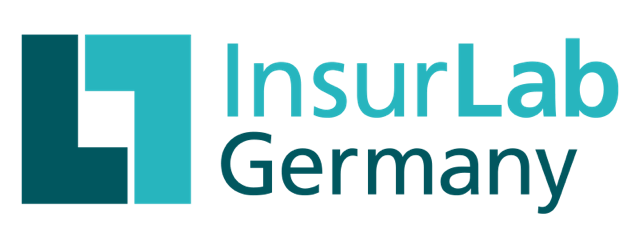Development of new business models only with IT
In times of WhatsApp, chatbots and artificial intelligence, offering policyholders the option of reaching the insurer via any channel is a goal that has not yet been satisfactorily achieved in the insurance industry. If you look at developments in the insurance market, you discover that it is no longer exclusively about being individually reachable. Rather, it is about winning the customer (digitally) where he or she is located and moves. The industry is discovering digital ecosystems. The promoters of digital ecosystems are the insured and technological progress, flanked by regulatory requirements from the state or the EU. The rapid pace of technological development in particular makes the active involvement of IT crucial.
Where decisions were previously made from the perspective of individual divisions, a holistic view is now required. The future orientation affects all units in the company and ensures team development between the specialist department, marketing, sales and IT. Where a lot of power for innovation is created, the view of the stability of the company must be maintained at the same time. Let's take a closer look.
Reaching customers digitally where they are
Insurers have reached a new level of digitization when it comes to communicating with customers. The aim is to be able to reach customers in the context of their actions, so that they do not have to search for the insurer first. The focus is on ecosystems, that is, for example, digital platforms for the customer's hobbies and passions, where he likes to shop or socialize. This is already reaching different depths. For example, I can rent an apartment on AirBnB and automatically take out household insurance in the background for the specified period. Conveniently and without me having to know the insurer behind the product: a so-called "embedded insurance".
This is not quite as profoundly illustrated by the example of flight booking. Here, it is possible to take out travel cancellation insurance when purchasing the flight ticket. I can see with which insurer I am concluding my contract and could theoretically also conclude the contract for travel cancellation separately with another insurer. Out of convenience, this happens rather rarely.
Another variant is offered by the Fressnapf online store on its homepage. Only when searching for pet health insurance do I receive information here and can then trigger the premium calculation. The integration of the insurance product into the respective ecosystem can be diverse, as can the degree of transparency and comparison options for the customer.
The ecosystem approach is generally not new. If we think of brokers and tied agents alone, who are actively involved in soccer clubs, allotment associations and other groups with a great deal of passion. However, the technical and regulatory framework now enables a very broad approach to addressing customers and also their data.
Brokers and tied agents are not necessarily the losers of this direct contact between customers and insurers. Rather, the low-threshold purchase of the product helps to generate contacts and thus leads that can also become interesting for the brokers as soon as the products require further advice and support. In networking with platforms, large brokerage houses can position themselves, for example, as comparators that can offer the optimal product depending on the constellation of the products purchased - such as the age of the customer, financial conditions, etc.
Technological progress as a catalyst
Technological progress enables new types of networking. New products and services can be developed that respond precisely to customer needs or create their demand and thus a new market. Insurers and startups are now consistent partners in implementation. Innovative solutions are purchased by insurers or ideas are established and further developed in their own startups. Central impulses come from the cloud, SaaS and API.
For example, the development of a cloud infrastructure provides the basis for meeting the increasing requirements of users. Legal and security-related concerns have been eliminated in recent years by legislators or by a change in the cloud providers' offerings. The task here is to meet the requirements of organizations and processes, select the appropriate provider and define areas of responsibility and a roadmap. Before it comes to selection, it is first necessary to lay the foundations and develop one's own strategy for cloud use. Between quickwins, which can include location-independent access to customer data or the use of communication solutions, the fields and processes must be identified whose digitization creates real added value with the cloud as a driver. The cloud also creates the conditions for Software as a Service (SaaS). Insurers will have the opportunity to scale the use of software components and adapt more flexibly to the needs of customers and employees.
Within a service landscape and especially in communication with external partners, the goal must be to make interfaces downward compatible. Because only then can they be further developed independently. But how can downwardly compatible APIs be realized without being suffocated in the long run by the high maintenance effort required to maintain old interface (versions)? Which versioning strategy should be pursued in which situation and implemented in practice? If large corporations such as Amazon and Google make their interfaces publicly available for widespread use, the focus of an insurance company is often on building long-lasting business relationships. Challenges arise in the development, maintenance and care, as well as in the protection of the interfaces of an insurance company. High demands on performance and resilience come into focus in order to meet the expectations of different consumers of an interface. System security and data protection must not be neglected at any time. The current discussion about establishing open interfaces in the insurance industry also requires a differentiated examination of the topic.
Aspects such as costs, security, performance, but also stability and reliability in particular must be taken into account. The development of an elastic insurance IT is attributed overriding importance. The elastic infrastructure makes it possible to expand or reduce processor, main memory and storage resources ad hoc. This allows an insurance company to respond dynamically to peak loads without having to plan for rigid long-term operating costs. This requires metrics and a high degree of automation.
Innovation takes place hand in hand
The challenge of reaching insureds and meeting their needs is complicated by technological innovation, which in turn will impact customer behavior. In addition, new solutions are beckoning in the market, driven by FinTechs and InsurTechs. And: Innovations demand new innovation.
Even if the insurance industry is not known for immediately jumping on every trend, the direction is clear: Insurers have a large amount of data that must be enriched and used in order to be able to make individualized offers to customers and reach them in a way that adds value. The necessary technical prerequisites are known in order to expand digital contact with the customer. Time is money here; every contact leads to more information and thus to an information advantage.
However, for all the power of ideas, the existing operation must not be lost sight of. It requires a cross-divisional view of the strategy and the technical requirements. This makes it all the more important for the establishment and further development of the business areas to also involve those responsible for IT. The organizational approach that combines stable IT operations and visionary business ideas is what we at adesso call "Ambidextrous Attitude". In connection with the potential to be created in architecture (Cloud Native Thinking) and intelligence in evaluation (Data Mindness), we speak of the "New School of IT". The goal is to combine the alignments, measures and technologies in order to be able to shape the insurance processes.
The innovative power of the insurance industry exists and organizations are aligning themselves accordingly. The degree of innovation is also noticeably increasing in the cooperation between the members of InsurLab Germanys. In addition to the challenges in the processes, the IT requirements of today and tomorrow must also be taken into account. In some cases, there is still homework to be done here in order to consolidate the foundation for the next stage of digitization. Innovation will only be successful in the long term if the technical stability of the company is also guaranteed.

